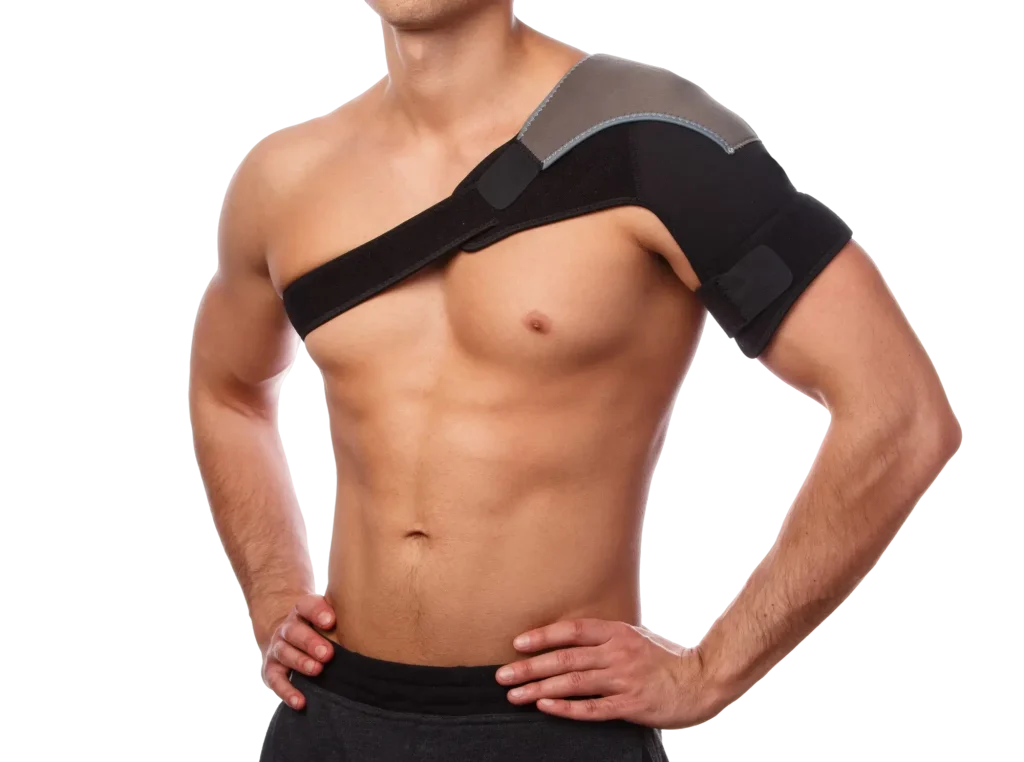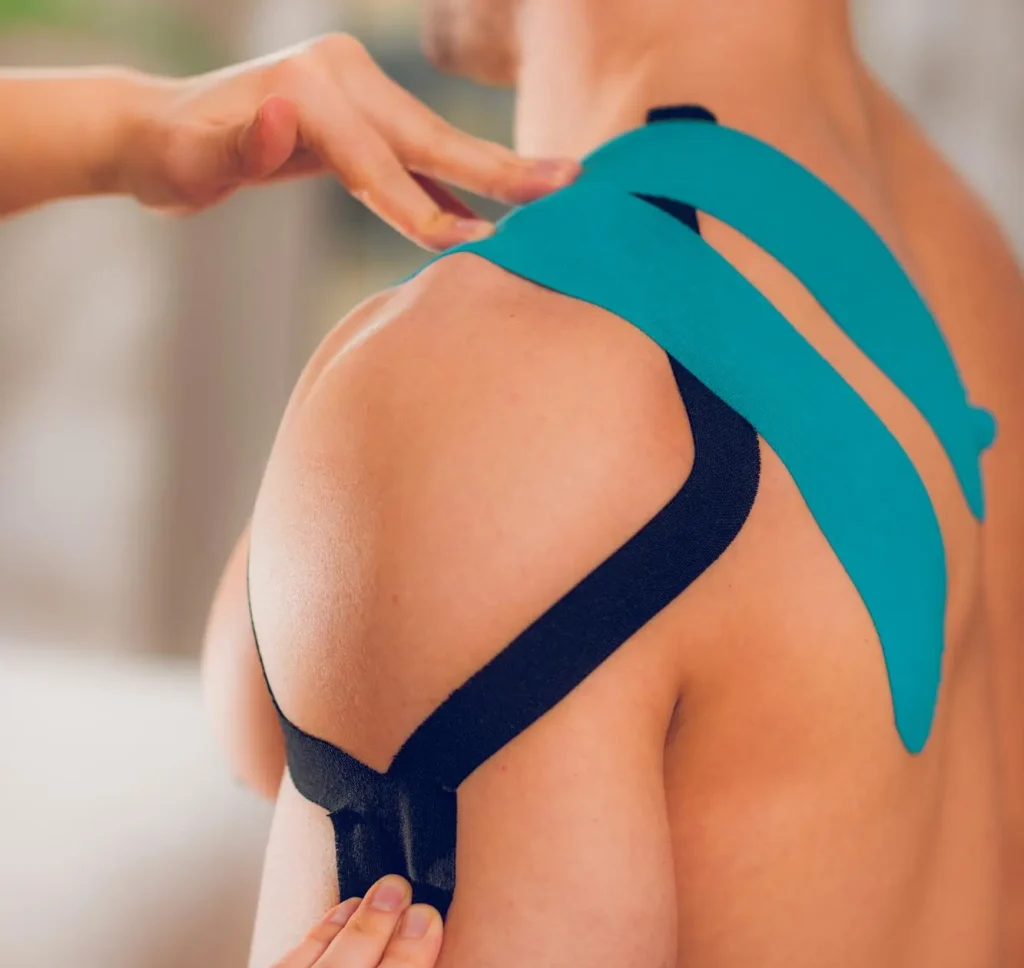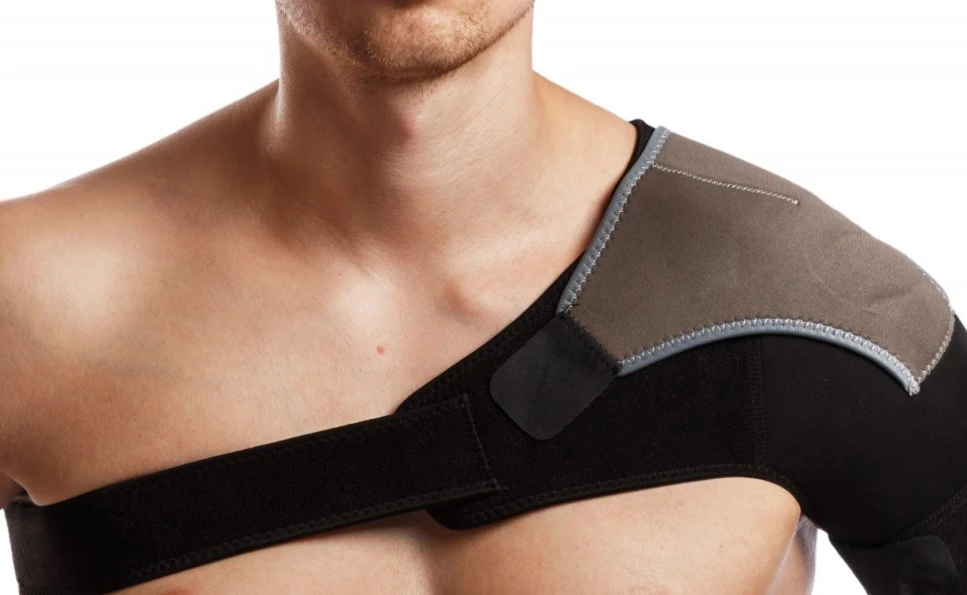
A dislocated shoulder is a painful injury capable of disrupting your routine, your sleep, and your peace of mind, and you cannot help but try to find immediate relief. But the persistent ache and the fear of dislocation happening again impact you. You might be wondering if there is anything that could accelerate your recovery and provide stability.
The shoulder abduction brace is a stabilising device that can hold your arm slightly away from your body for healing and reducing the risk of dislocating the shoulder again. But how do you know if it’s right for you? Let’s explore this blog to understand how an abduction brace works and whether it could finally get your shoulder back on track.
What is a Dislocated Shoulder?
When the upper arm bone becomes displaced from its socket in the shoulder, it is referred to as a dislocated shoulder. This creates significant discomfort and functional damage.
Signs of a dislocated shoulder are:
- Intense Pain at the time of dislocation.
- The shoulder may appear misaligned or deformed.
- Swelling and bruising around the joint.
- The arm movement becomes restricted or impossible to perform.
What is a Shoulder Abduction Brace?
A shoulder abduction brace is a type of shoulder immobiliser brace to hold your arm slightly away from your body at an angle of 15 to 45 degrees.
How Does a Shoulder Abduction Brace Help in Healing?
A shoulder abduction brace is an orthopaedic device designed to:
- It stabilises the joint firmly to keep the shoulder joint in its correct position. Therefore, it reduces the risk of dislocation.
- A shoulder brace reduces pain and inflammation and restricts unnecessary movement. It compresses to relieve pain and swelling around the joint.
- The restricted positioning helps to align healing tissues correctly and promotes recovery.
- An Orthopaedic shoulder brace reduces excessive rotation or abduction, preventing injury and promoting a healing process.
“A well-fitted brace can make all the difference between a prolonged recovery and a safe, supported one.“
When Should You Use a Shoulder Abduction Brace?
- After surgery for protection and recovery of the joint, after rotator cuff or labral repairs.
- For shoulder dislocations, stabilising the joint and preventing re-dislocations.
- To stabilise the shoulder for recovery from chronic looseness or partial dislocations.
- Shoulder braces are used in rehabilitation and bracing exercises.
- Athletes use shoulder braces when returning to high-impact activities.
Women-Specific Support: What Is a Shoulder Brace for Women?
A shoulder brace for women is a device that provides relief from pain, discomfort, or injury to the shoulder. It supports, heals, relieves pain, and improves stability. Shoulder braces offer support for relieving muscle strains, injury from rotator cuff tears, or dislocations. They help to improve posture and prevent more problems.
Key Features:
- The braces keep the joint steady, protect the shoulder joint from rotator cuff tear or after a shoulder dislocation.
- Bracing helps the shoulders pull back. It enables women to maintain good posture, reducing the strain associated with work.
- Shoulder braces protect against injuries related to sports and reduce the risk of sprains or other injuries.
- Shoulder braces are lightweight, breathable and made of comfortable fabrics.
- Many types of braces reduce swelling and improve blood flow through compression.
- The braces feature adjustable straps to provide necessary support to various body types.
Types of Shoulder Injuries That Benefit From Bracing
Some of the most common shoulder injuries people encounter, and how a shoulder brace sustains and aids recovery:
1. Dislocated Shoulder
Dislocation can be through trauma, during sports. A shoulder brace can help to immobilise the injury during healing and in joint recovery after surgery.
2. Acromioclavicular Joint (ACJ) Injuries
The ACJ is a small, hard lump on the top of your shoulder, essential for overhead throwing for athletes. This joint can become sprained from repeated falls, that can cause shoulder pain. It can also dislocate. Therefore, wearing a shoulder brace can decrease swelling and inflammation. It can help with recovery and stabilise the dislocated ACJ after surgery.
3. Impingement Syndrome
Shoulder impingement syndrome happens when the arm is used in overhead motions. Small bony spurs develop, trapping the rotator cuff tendons above the main shoulder joint. A shoulder brace helps decrease pain and limits movement to aid in healing.
4. Rotator Cuff Tears
The rotator cuff is a crucial group of tendons that provide both movement and stability to your shoulder. A damaged rotator cuff leads to pain. Rotator cuff tears in athletes heal if the area is immobilised and supported by a shoulder brace. Shoulder braces strengthen the rotator cuff after it has healed sufficiently.

5.Labral Tears
The labrum is essentially a cushion that surrounds the shoulder joint’s socket. When the individual suffers a fall or a blow, the labral tears happen. Sometimes, such tears are from other physical activities. A shoulder brace supports and manages blood flow to the affected area, helping to repair and reduce pain.
6. Shoulder Arthritis
Shoulder arthritis erodes the shoulder joint due to overuse and age, the joint dries up, becomes stiff, and is painful. Shoulder braces strengthen the joint and reduce pain. Shoulder braces can help decrease arthritis or prevent it from occurring.
What is an Orthopaedic Shoulder Brace?
The complex human shoulder joint area has a broad range of motion, which makes it prone to injury. Individuals need a custom shoulder support to reduce pain, inflammation, and stabilise the shoulder. An orthopaedic shoulder brace can stabilise, offer support, and protect the shoulder joint while helping in treatment and preventing discomfort by compressing the area, healing and reducing pain from injuries, dislocations, and arthritis.
Types of Orthopaedic Shoulder Braces
- Sling braces: These act as immobilisers that support the shoulder joint, restrict movement to heal the affected area. Thesefeature a padded strap around the neck area and a sling to hold the arm comfortably after a surgery, dislocation, fractures, or injuries.
- Compression braces: These surround the shoulder joint, compress the area to reduce swelling, alleviate pain, and improve circulation. The braces are adjustable and give a comfortable fit. They are suitable individuals with moderate shoulder pain, strains, and inflammation.
- Stabilising braces: Stabilising braces are ideally used to support the rotator cuff or the acromioclavicular (AC) joint. The adjustable straps can stabilise the injured area, limit movement, and promote joint alignment. Stabilising braces offer critical support to athletes, relieving rotator cuff tears or AC joint separations during the healing process.
- Custom-fit braces: Custom-fit braces are customised to an individual’s needs and measurements for support and comfort. The physiotherapist or orthopaedic suggests the braces after an assessment.
How to Wear a Shoulder Abduction Brace (Step-by-Step)
While every brace is different, the following steps suit most types:
- First open all the straps so your brace is ready to go.
- Put your arm into the brace with the part that goes around your bicep (upper arm) at the bottom, and loosen for now.
- Secure the Main Shoulder Strap
- Grab the long shoulder strap from the back.
- Pull it forward and under your armpit.
- Now thread it through the provided loop at the front..
- Pull the strap to feel comfortable. Secure it with the fabric fastener.
- Secure the bicep strap circling your upper arm, but not tightly.
- Pull the extra elastic tabs to achieve a comfortable fit and squeeze.
- Slip the soft padded sleeve under the shoulder strap to cross your armpit.
“Check your skin regularly for irritation, and adjust the brace. If there is pain, swelling, or any other new issues, remove it and contact your doctor.“
Top Shoulder Bracing Exercises for Quick Recovery
When healing from a shoulder dislocation or trying to strengthen it, exercises performed while wearing a shoulder brace are beneficial:
- Wall Push: This is an isometric exercise, where you can imagine trying to push your hand against a wall that does not exist. Pressing your hand against a static object and holding it, allowing your muscles to work without moving your joint.
- Squeeze Your Shoulder Blades: These exercises involve retracting your shoulder blades. Imagine trying to pinch a pencil between your shoulder blades. This strengthens the muscles in your upper back and promote shoulder stability.
- Arm Lifts: These are abduction and adduction movements.
- Abduction: When you lift your arm straight out to the side, away from your body.
- Adduction: When you bring it back down towards your body. These exercises strengthen the muscles that help you lift and lower your arm.
- Doorway Rotations: These external and internal rotation movements are for the rotator cuff muscles.
- For external rotation,imagine holding a doorknob and turning it outward, away from your body.
- For internal rotation, imagine turning inwards, towards your body. These strengthen the powerful muscles that stabilise your shoulder.
- Gentle Arm Circles: Make small circles with your arm, increasing the size. This helps improve the range of motion and reduces stiffness.
Top Benefits of Shoulder Bracing Exercises
- Muscle strength increases around your shoulder, which can help reduce pain from injuries or long-term issues.
- Building strength in the muscles helps stabilise your shoulder joint. Therefore, the risk of dislocating again is reduced.
- As your shoulder becomes stronger and more flexible, simple daily tasks become easier.
- Consistent exercises shield your shoulders by strengthening the supporting muscles.
“Remember to check with your doctor or physical therapist before starting any new exercise routine.“

Frequently Asked Questions
Yes, they do. An abduction brace can stabilise and immobilise the joint. Therefore, it enables the shoulder joint to heal. This reduces pain, promotes healing, and contributes to a successful recovery.
You can wear a shoulder brace depending on the severity of the injury and the healing process, which can last from a few weeks to several months. The brace is worn constantly to provide support and stability in cases of rotator cuff injuries.
Yes, you can. The brace provides support and stabilises the shoulder, and prevents movement that could slow down the healing process or your rest.
Yes, if you’ve experienced dislocations before or have an unstable shoulder.
Here’s how a shoulder brace helps:
It restricts movement by acting as a barrier and prevents it from entering positions that lead to dislocation.
A brace improves your proprioception. It is your body’s unconscious sense of where your joint is in its surrounding space. The brace helps your muscles react faster to stabilise the joint. It reduces the risk of a dislocation.
Final Thoughts: Find Relief and Confidence With the Right Shoulder Support
A dislocated shoulder can interrupt even simple tasks, making you miserable. Therefore, it is essential to seek medical advice to get relief from this painful situation. An abduction brace may be the support you need to heal with confidence, reduce re-injury risk, and return to your routine safely.
Need Help Choosing the Right Shoulder Brace?
KARE Prosthetics & Orthotics can help you find a solution to your condition. Our experienced team ensures the right fit and guidance for your shoulder recovery journey.
📞 Call us now or book your free consultation to take the next step in healing..



